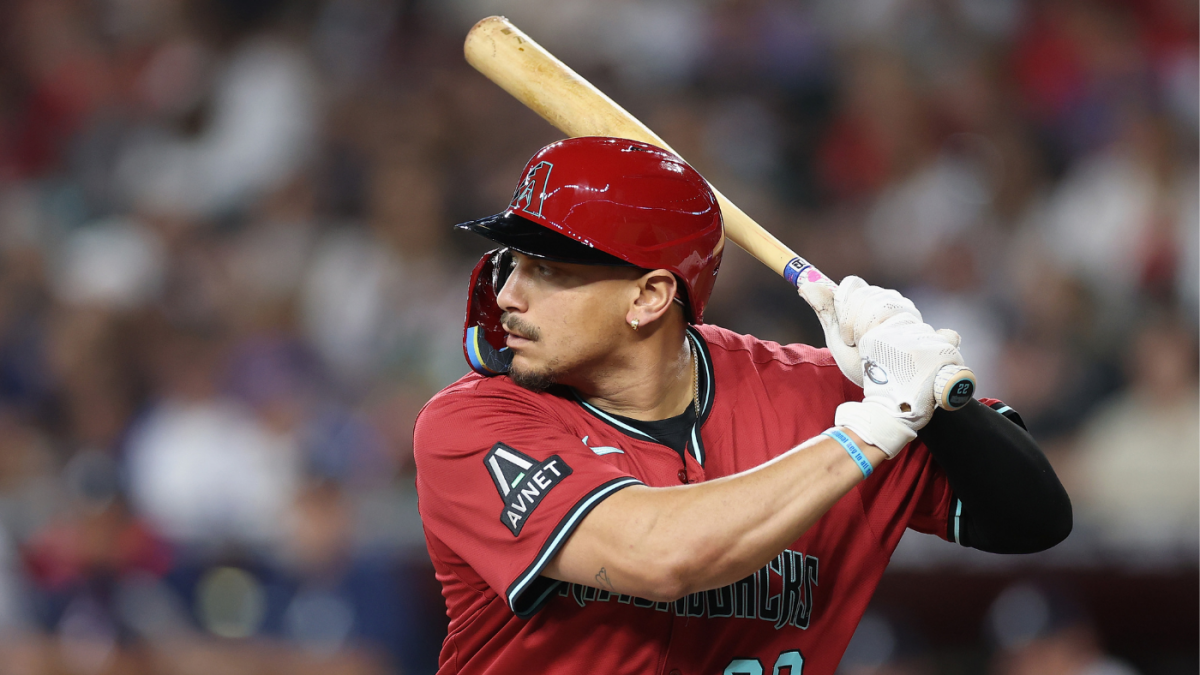The Seattle Mariners Acquire Josh Naylor: A Trade Deadline Deep Dive
Introduction
The MLB trade deadline is a high-stakes moment where teams either fortify their rosters for a championship run or pivot towards a long-term rebuild. In 2025, the Seattle Mariners made a bold move by acquiring first baseman Josh Naylor from the Arizona Diamondbacks, a transaction that sent shockwaves through the league. This trade wasn’t just about filling a roster spot; it was a strategic chess move that reflected the Mariners’ ambition to compete with the Houston Astros in the American League West. Meanwhile, the Diamondbacks signaled a shift in their organizational philosophy, prioritizing future success over immediate wins. This report delves into the motivations, implications, and potential outcomes of this trade, offering a comprehensive analysis of how it could reshape both franchises.
The Mariners’ Offensive Overhaul
Addressing a Critical Need
The Mariners entered the 2025 season with a strong pitching rotation and a promising young core, but their offense lagged behind the league’s elite teams. Their first basemen had been particularly underwhelming, failing to provide the consistent power and run production necessary to compete with the Astros and other top contenders. The acquisition of Josh Naylor was a direct response to this deficiency, a move designed to inject offense into the heart of the lineup.
Naylor, a former All-Star, brought a proven track record of hitting for power and driving in runs. His 11 home runs and 59 RBIs in the first half of the season made him one of the most coveted offensive weapons available at the trade deadline. The Mariners saw him as the missing piece to their offensive puzzle, a player who could anchor the middle of the lineup and provide clutch performances in high-leverage situations.
Long-Term Vision
Beyond the immediate offensive boost, the Mariners viewed Naylor as a long-term asset. At his age, he fit seamlessly into their timeline, aligning with their other young stars like Julio Rodríguez and Jarred Kelenic. This wasn’t a rental player acquired for a short-term fix; it was an investment in the team’s future. The Mariners are building a sustainable contender, and Naylor’s addition was a step towards solidifying their roster for years to come.
The Diamondbacks’ Rebuilding Strategy
A Shift in Priorities
For the Arizona Diamondbacks, trading Josh Naylor was a clear indication of their shift in priorities. Despite aspirations of competing in the National League West, the team faced an uphill battle against the dominant Los Angeles Dodgers and San Diego Padres. Recognizing the need for a long-term rebuild, the Diamondbacks decided to capitalize on Naylor’s value and acquire assets that could contribute to their future success.
Acquiring Future Talent
In exchange for Naylor, the Diamondbacks received left-handed pitcher Brandyn Garcia and right-handed pitcher Ashton Izzi. While neither pitcher was a top-tier prospect, both possessed intriguing potential and were seen as valuable additions to the Diamondbacks’ farm system.
Brandyn Garcia, known for his deceptive delivery and ability to generate strikeouts, was viewed as a potential future middle-of-the-rotation starter. Ashton Izzi, with his high-velocity fastball and developing secondary pitches, was projected as a possible late-inning reliever. The Diamondbacks’ decision to trade Naylor was met with mixed reactions from fans, but the front office remained steadfast in their belief that the trade was necessary to build a stronger, more sustainable team in the long run.
Assessing the Trade: Who Won and Why?
Immediate Impact for the Mariners
The Mariners’ acquisition of Naylor was a clear attempt to address a pressing need and bolster their playoff chances. His offensive production and veteran presence were expected to provide a significant boost to their lineup, making them a more formidable contender in the American League West. If Naylor performed as expected, the Mariners’ chances of reaching the playoffs would increase substantially.
However, the Mariners also parted with two promising young pitchers in Brandyn Garcia and Ashton Izzi. While neither pitcher was a sure thing, they both possessed the potential to develop into valuable contributors at the major league level. The Mariners were essentially betting that Naylor’s immediate impact would outweigh the potential loss of these two prospects.
Long-Term Gains for the Diamondbacks
The Diamondbacks, on the other hand, prioritized long-term value over immediate gratification. By trading Naylor, they acquired two young pitchers who could potentially become key contributors to their future success. This trade aligned with their broader rebuilding strategy, focusing on acquiring and developing young talent rather than relying on expensive free-agent signings.
Whether the Diamondbacks “won” this trade depends on the development of Garcia and Izzi. If both pitchers reach their potential, the Diamondbacks could be viewed as having made a shrewd move. However, if neither pitcher pans out, the trade could be seen as a missed opportunity to acquire more valuable assets.
Conclusion: A Calculated Gamble with Long-Term Implications
The Josh Naylor trade was a classic example of a win-now team (the Mariners) trading with a rebuilding team (the Diamondbacks). The Mariners got the proven MLB talent they needed to boost their lineup and make a playoff push, while the Diamondbacks acquired potential building blocks for their future.
The acquisition of Josh Naylor by the Seattle Mariners marked a pivotal moment in their season. It was a bold move that signaled their intention to contend for a playoff spot and challenge the Houston Astros’ dominance in the American League West. Whether this gamble pays off remains to be seen, but one thing is certain: the Mariners’ pursuit of power has injected new life into their season and created a ripple effect throughout the league. The Arizona Diamondbacks, meanwhile, doubled down on their commitment to the future, hoping their new pitching prospects will blossom into stars. This trade wasn’t just about exchanging players; it was about exchanging philosophies, a testament to the contrasting approaches teams take in their pursuit of baseball glory. Only time will tell which team ultimately reaps the greater reward.

